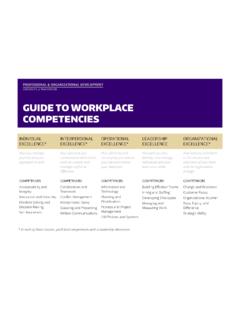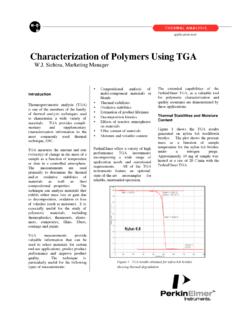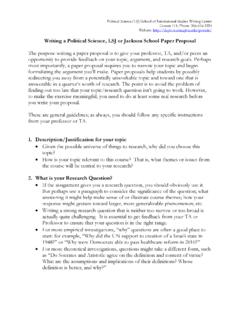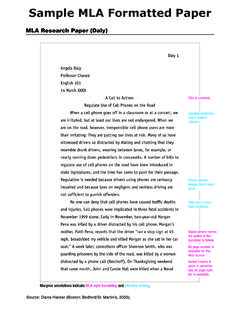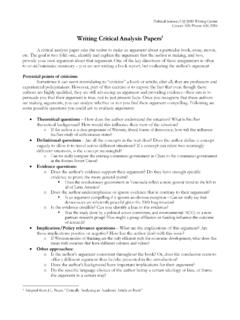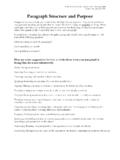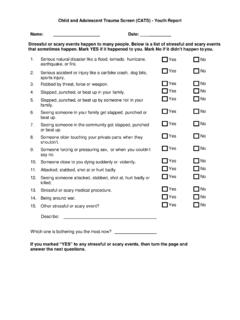Transcription of LINEHAN RISK ASSESSMENT AND MANAGEMENT P …
1 LRAMP Version (Last updated 5/10/16) Page 1 of 7 LINEHAN RISK ASSESSMENT AND MANAGEMENT PROTOCOL (LRAMP) Client: Date Contacted: Person Completing: Date Created: SECTION 1: REASON FOR COMPLETION 1. Reason for completing: History of suicide ideation, suicide attempt, or non-suicidal self-injury at intake New (or first report of) suicide ideation and/or urges to self-injure Increased suicide ideation and/or urges to self-injure Suicide communication or other behavior indicating imminent suicide risk since last contact Suicide attempt and/or self-injury since last contact Suicide attempt and/or self-injury occurred or was ongoing during contact Other Please explain: 2. Describe the specific incident or behavior that occurred: LRAMP Version (Last updated 5/10/16) Page 2 of 7 SECTION 2: SUICIDE RISK ASSESSMENT 3.
2 Structured Formal ASSESSMENT of Current Suicide Risk was: Conducted Not conducted, because Select one Clinical reasons: Check all that apply Only baseline behaviors (typical for client) ideation/urges to harm not ordinarily associated with increased imminent risk for suicide or for medically serious self-injury No or negligible suicide/self-injury intent by time of contact, impulse control appears acceptable, no new risk factors No or negligible suicide/ self-injury intent by contact end, impulse control appears acceptable, no new risk factors apparent, risk ASSESSMENT conducted previously Self-injury that occurred was not suicidal and superficial/minor ( , scratch, took one extra pill of medication) Suicide communication or ideation best viewed as escape behavior and treatment aims better accomplished by targeting precipitants and vulnerability factors rather than by formal risk ASSESSMENT Suicide communication or ideation best viewed as operant behavior; formal risk ASSESSMENT may reinforce suicide ideation Client in ongoing treatment with another primary therapist who has recently or will soon assess and manage suicide risk; not of value to have two clinicians treating the same behavior.
3 Referred client to other responsible clinician for evaluation Forgot, plan for follow up on: Other reason: LRAMP Version (Last updated 5/10/16) Page 3 of 7 4. Select Acute Suicide Risk Factors ACUTE RISK FACTORS Not Reported/ Not Observed No Somewhat Yes Comment Current suicide intent, including client belief that he/she is going to commit suicide or hurt self Current suicide plan, rehearsals and/or preparation Preferred method currently or easily available Access to lethal means Perceived burdensomeness to others Current severe hopelessness or pessimism Diminished concentration and impaired decision-making Alcohol intoxication (currently or likely to be) Severe loss of interest or pleasure (anhedonia) Recent discharge from psychiatric hospital Currently or will be isolated or alone Recent stressful life events ( recent interpersonal losses, disciplinary and legal crises)
4 Recent diagnosis of a mental disorder Recent diagnosis of chronic and/or life threatening physical illness ( , cancer, multiple sclerosis) Client motivated to under-report/lie about risk LRAMP Version (Last updated 5/10/16) Page 4 of 7 Population/Setting Specific ACUTE SUICIDE RISK FACTORS Not Reported/ Not Observed No Somewhat Yes Comment Psychiatric Inpatient: Suicide attempt at time of admission Psychiatric Inpatient: Escalating agitation, anxiety, and motor restlessness, particularly in conjunction with sleep difficulties Jail/Prison: First week of incarceration Youth: Exposure to recent suicide in media, community, etc. 5. Suicide protective factors PROTECTIVE FACTORS Not Reported/ Not Observed No Somewhat Yes Comment Hope for the future Confidence in ability to solve or cope with problems Attachment to life Responsibility to children, family, or others, including pets, who client would not abandon Social support or connectedness Attached to therapist, counselor, or other service provider Fear of suicide, death and dying Fear of social disapproval of suicide Belief that suicide is immoral Frequently attends religious services Client motivated to over-report risk Other LRAMP Version (Last updated 5/10/16) Page 5 of 7 SECTION 3: SUICIDE RISK MANAGEMENT 6.
5 Treatment actions aimed at suicidal/self-injurious behaviors: (Check All that apply) A. Suicidal ideation and behavior not explicitly targeted in session (Check reasons) Client is not imminently dangerous Same reasons as for not conducting structured formal suicide risk ASSESSMENT Risk ASSESSMENT was sufficiently therapeutic. Other: B. Did behavioral analysis of previous suicidal ideation and behaviors. C. Analyzed chain of events leading to and consequences of current suicidal/self-injurious ideation and behaviors Vulnerability Factors Prompting Events Behavior Suicide Attempt Non-suicidal self-injury Increased suicide ideation and/or urges to self-injure Suicide threat Other (specify) Consequences Comments (Optional) D.
6 Focused on crisis intervention and/or problem solving (Check all used): Validated current emotions and wish to escape or die (emotional support) Identified events that have set off current crisis response Formulated and summarized problem situation with client Worked to remove, remediate prompting events Gave advice and offered solutions to reduce suicidality Challenged maladaptive beliefs related to suicide/self-injury Coached to use skills client is learning in therapy Clarified and reinforced adaptive client responses Generated hope and reasons for living Emphatically told the client not to commit suicide or self-injure Other (specify) COMMENTS (Optional) on crisis intervention: E.
7 Developed or reviewed existing crisis plan F. Committed to a plan of action Client made credible agreement for crisis plan and no self-injury or suicide attempts until Quote from client (Optional) Client agreed to remove lethal implements (specify type; , gun, drugs) by (how) G. Troubleshot factors that might interfere with plan of action: H. Anticipated a recurrence of crisis response and developed a back-up crisis plan I. Increased social support Planned for client to contact social support (specify who): LRAMP Version (Last updated 5/10/16) Page 6 of 7 Alerted network to risk (describe): Scheduled a check-in for J. Referred To primary therapist : To clinician on-call at To crisis line (Ensured client had phone number) To medication evaluation: Other K.
8 Hospitalization considered; did not recommend because (check all that apply): Client is not imminently dangerous Other environmental support available Client can easily contact me if condition worsens Client previously hospitalized, benefit not apparent No bed available Client refused Client refused despite persistent argument by me in favor Client does not meet criteria for involuntary commitment Hospitalization would increase stigma and isolation which are important issues for this client Hospitalization would interfere with work or school which are important for this client, Hospitalization would violate already agreed to plan, Hospitalization would cause undue financial burden which is an important issue for this client Other L. Other treatment actions taken (please describe): LRAMP Version (Last updated 5/10/16) Page 7 of 7 SECTION 4: FINAL DISPOSITION 7.
9 I believe, based on information currently available to me: A. Client is not imminently dangerous to self and will be safe from serious self-injury or suicide until next contact with me or with primary therapist for the following reasons: Check all that apply Problems that contribute to suicide risk are being resolved Suicide ideation and/or intent reduced by end of contact Credible agreement for crisis plan and no self-injury or suicide attempts Adequate crisis plan in place Suicidality being actively addressed by primary therapist Protective factors outweigh risk factors (describe if not otherwise noted): Other: B. There is some imminent danger of serious self-injury or suicide. However, emergency interventions likely to exacerbate rather than resolve long term risk.
10 Comments on reasons for not pursuing emergency intervention: C. Emergency intervention is needed to prevent imminent danger of medically serious self-injury or suicide. Check all that apply Took to ER at Arranged for outreach evaluation for involuntary commitment (describe): Arranged for a police wellness check Called 911 for medical aid Hospitalization arranged at : on (day) OTHER (describe): Comments on emergency intervention (optional): D. Significant uncertainty exists as to imminent risk, I will get a second opinion from: Check all that apply Supervisor: crisis clinic supervisor: Team member or colleague: Medical expert: Primary therapist: Other: 8.
